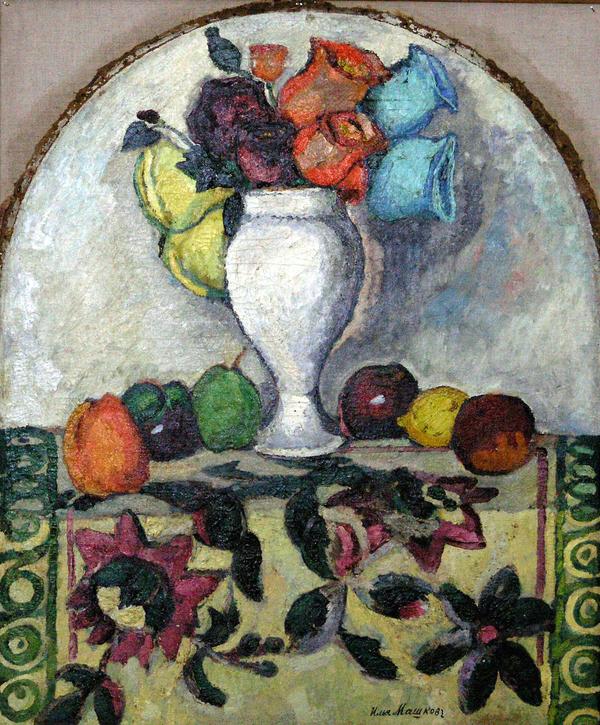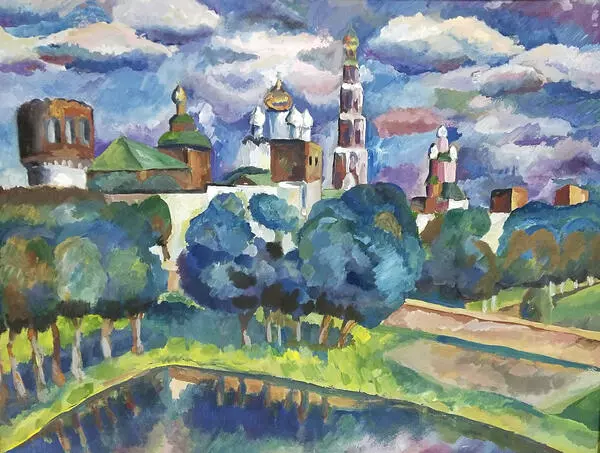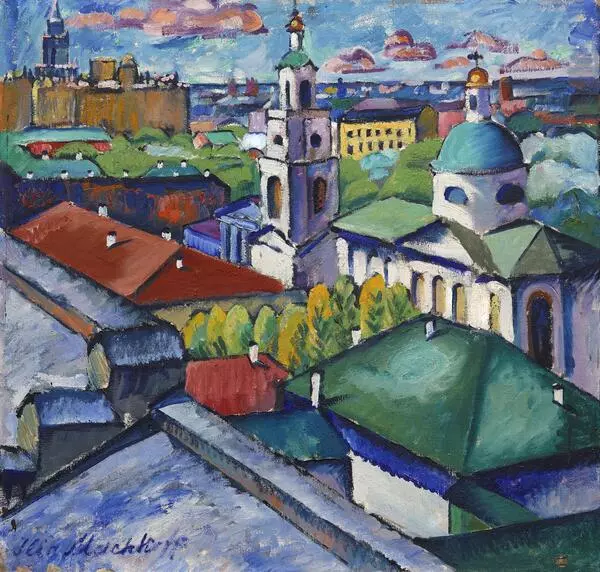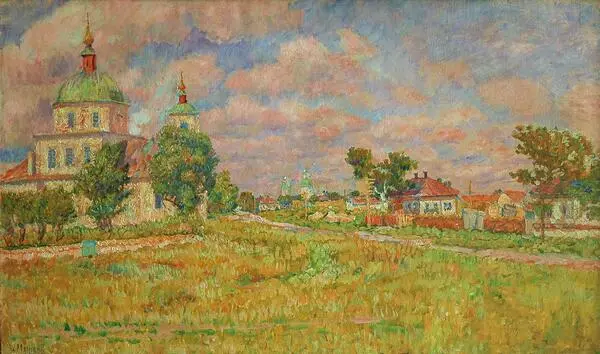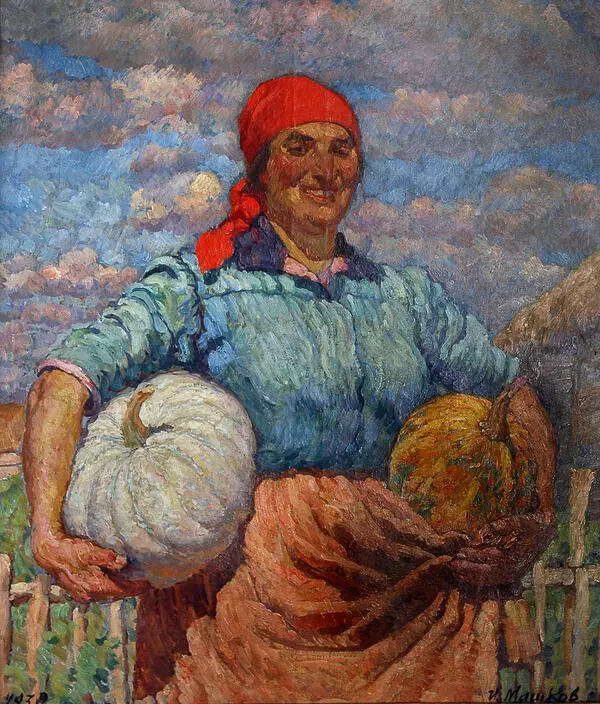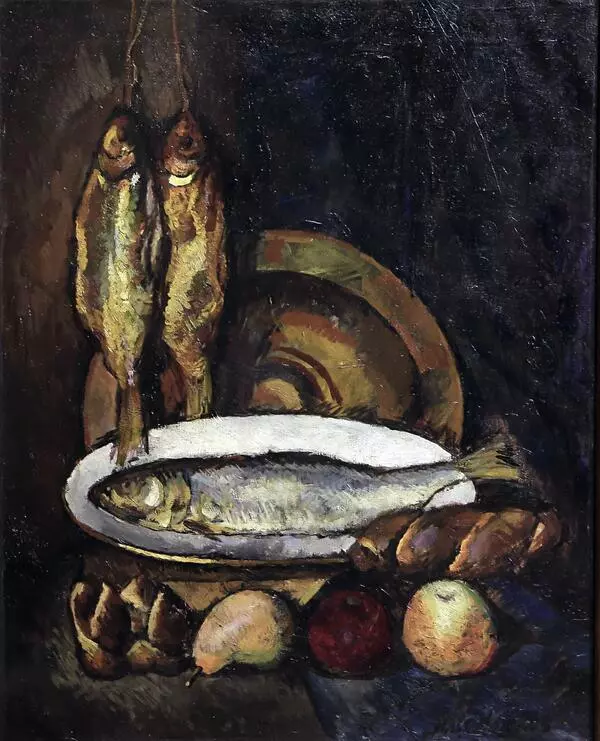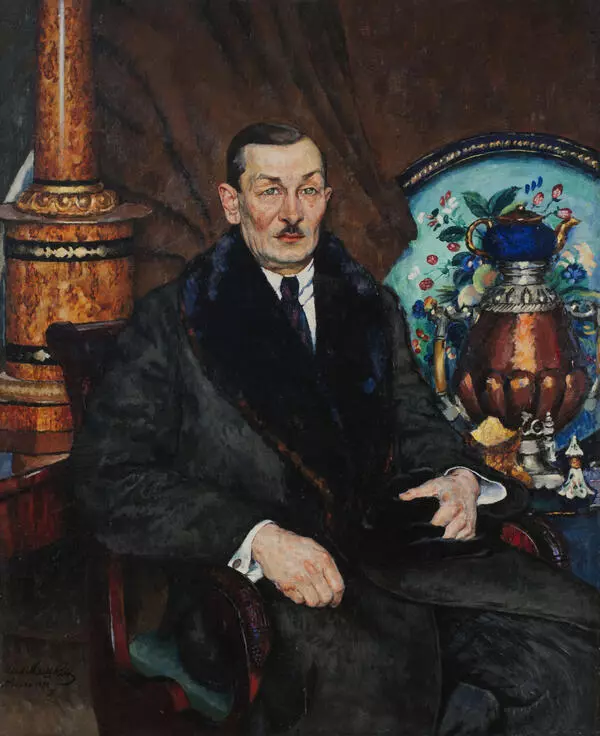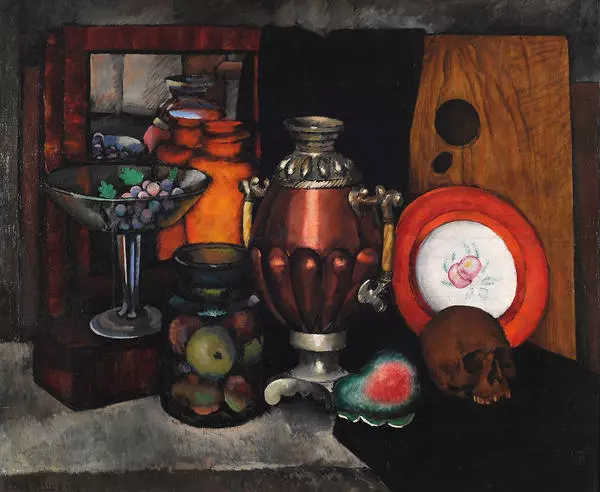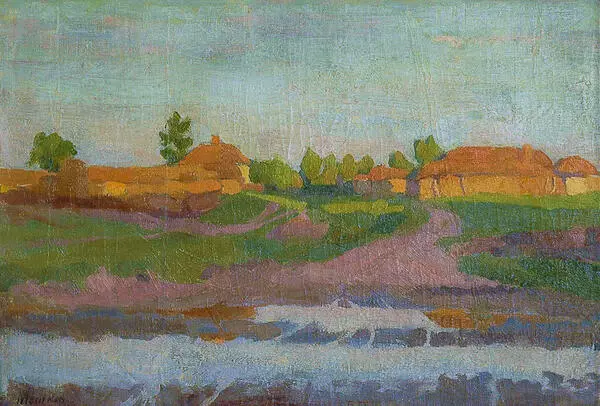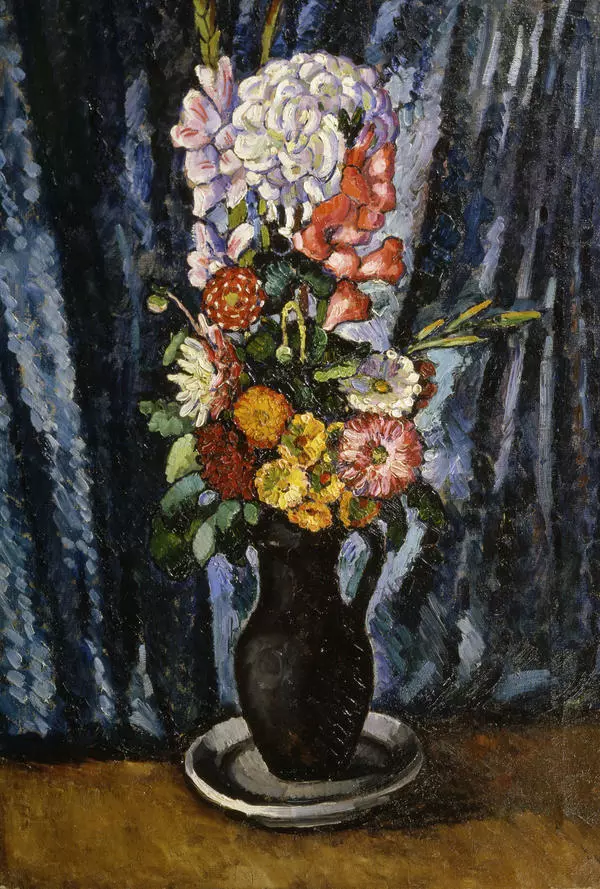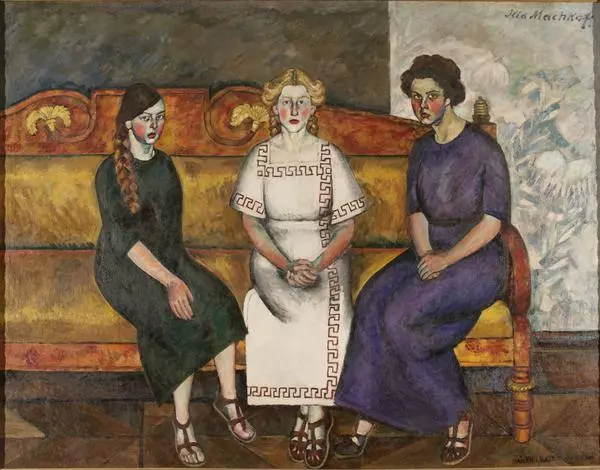The collection includes a decorative still life painted by Ilya Ivanovich Mashkov.
The piece was created at a time when he was a member of the arts association of Russian avant-garde artists “Jack of Diamonds”.
Ilya Mashkov was born on July 29, 1881 in the cossack village of Mikhailovskaya-on-Don, Khopyorsky district of Don Host Oblast, now Uryupinsky district of Volgograd region. He studied in a three-grade parochial school. From the age of 12 he lived in Borisoglebsk and worked for small traders. Interested in drawing, he copied icons, replications, lubki popular prints, and signboards. He also arranged shop windows.
At the age of 19 he moved to Moscow and entered the Moscow School of Painting, Sculpture and Architecture as a non-matriculated student. He studied under the painter Valentin Aleksandrovich Serov, the painter and theater artist Konstantin Alexeevich Korovin, and the master of historical painting Apollinariy Mikhailovich Vasnetsov.
During his studies, he opened a studio and embarked on giving his first drawing lessons.
In 1908, Ilya Ivanovich traveled to Europe, where he studied classical European art and modern painting movements. He was most impressed by the work of the modernist painter Henri Matisse and the post-impressionist Paul Cezanne.
In 1911, Ilya Ivanovich Mashkov, together with the painter Pyotr Petrovich Konchalovsky, established the association “Jack of Diamonds”. It existed until 1917. The artists of this association renounced the traditions of academism and realism of the 19th century and turned to a new movement — the avant-garde. Their work was marked by pictorial and sculptural solutions in the post-impressionist style, fauvism and cubism.
The painting “Still Life” was created during this period in the “Jack of Diamonds” manner. The still life is composed of fruit arranged on a table and a white vase with flowers. All these objects are painted in impasto technique, with bright and rich paints, with the forms “molded” by the color. The artist specifically used hyperbole to make the work expressive, decorative and joyfully bright. The still life reminds of a Russian tray, shawls with floral motifs or a shop window with fruit.
In 1922, Ilya Ivanovich began to work in the field
of easel art. His style was realistic and is still considered classic Soviet
painting.

